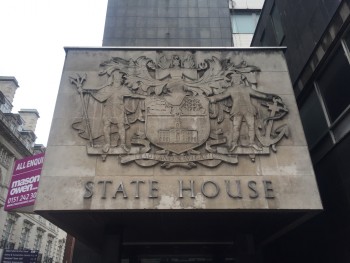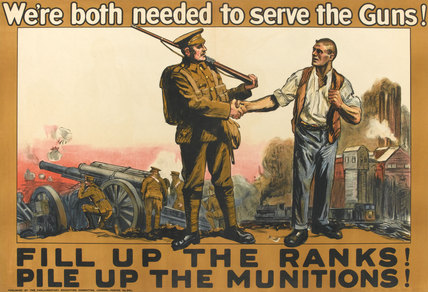We are developing the social individualist meta-context for the future. From the very serious to the extremely frivolous... lets see what is on the mind of the Samizdata people.
Samizdata, derived from Samizdat /n. - a system of clandestine publication of banned literature in the USSR [Russ.,= self-publishing house]
|
On 3 June 1916, the British public finally got to find out about the Battle of Jutland. Sort of. At this stage things look bad. The British have lost more ships and more men than the Germans. And they have lost the opportunity to annihilate the German High Seas Fleet. But worse is to come. The Admiralty is claiming to have sunk 2 German dreadnoughts when they have done no such thing. Over the years it will emerge that explosive handling practices were appalling and communications were poor.  The Times 3 June 1916 p9 Fortunately, there is a crumb of comfort, a rather large one. The Times nails it:
It will not impair the efficiency of our blockade, or our ability to uphold our freedom of the seas for ourselves and our Allies, nor do we think that it will dispose the Germans to encounter that “main part of the English fighting fleet” in the avoidance of which they have hitherto shown such vigilance and alertness.
Jutland may not have been as decisive as Trafalgar but it was decisive enough.
If tunnel building were an Olympic support, I suspect that Switzerland would bestride the top step of the podium and its virtually unknown national anthem would blare out to the cheering crowd, thrilled by the culmination of a 20-year slog of building the Gotthard base tunnel, the world’s longest rail tunnel, which opens today, co-incidentally the anniversary of a British naval triumph against the French, the Glorious First of June (with those rebellious colonists being involved tangentially).
This twin-bore tunnel opened on time and within budget, and it runs level and almost straight through the varying geology of 35 miles of Swiss mountain, a fantastic achievement, but with sadly 9 deaths, but that seems very low over 20 years and 35 miles. If it can be traversed, per reports, in 17 minutes, that’s an average speed of over 120mph. The idea is to get lorries crossing the Alps through Switzerland off the Swiss roads. Switzerland is, of course, (along with Liechtenstein) surrounded by the European Union but outside it.
And meanwhile, as the Swiss literally give geology both barrels, in England, we have our glorious Channel Tunnel and the Channel Ports (as the Sage of Kettering relayed to me once ‘The problem with the Channel Tunnel is that it has a government at both ends.‘). Well, today a House of Commons committee has come up with a rather skeptical report about a new plan to cope with cross-Channel traffic. For those who do not drive in the South-East of England, there is a standing plan in place to cope with the vagaries of the joys of free movement of goods in the glorious European Union whenever the Channel Tunnel runs into a problem (e.g. when the French start horsing around, burning sheep etc.), called ‘Operation Stack’, where the Kent police close an entire motorway, the M20, and park lorries bound for the Continent on it pending the cessation of hostilities, typically a period of 5 days of so, when a major motorway becomes a lorry park, and to Hell with the locals.
part of the M20 was used 32 times last summer by queuing lorries – a process known as Operation Stack.
The British answer to this problem is, of course, to shell Calais and demand its return to English control (er, no), it is to build a 65 hectare lorry park at a cost of £250,000,000. This would be as big as Disneyland (the one in California) and bigger than the Vatican (a mere 44 hectares) and with the added bonus of no Pope. It will allow 4,000 lorries to be parked whilst the benighted lorry drivers await the restoration of normality. One might ask why each lorry space would cost £62,500 (c.$90,000 US)?
Do we see here cultural differences between the UK and Switzerland? The acceptance of failure and its normalisation, a tendency towards inflated cost and an attitude of weary resignation, against a positive can-do attitude that bulldozes through problems.
So why can’t we be like Switzerland?
Postscript: Eric’s comment indicates that the Swiss may not have been above a bit of creative accounting in completing the tunnel on time and in budget, for which I am grateful, I may have been misled by the BBC (which in Cyrillic was the acronym for the Soviet Army Airborne Forces, what a co-incidence).
Almost a month ago now, I attended an event, organised by Christian Michel, at which another friend, Professor Tim Evans, spoke about the public and private supply of public goods. You attend such events in the hope that they will make you think things that might not otherwise have occurred to you, and Tim’s talk had this effect on me. What follows is based on what I mostly wrote the day after that talk. I had intended to finish writing this and then post it here before going on a recent expedition to stay with friends in the South of France, but travel preparations got in the way of this. However, nothing in what I wrote then had to be said then or never, if you get my meaning, so here is what I put, suitably polished and amended, now.
Tim Evans’s theme was how, over the centuries, institutions for the supply of such things as healthcare, roads, lighthouses (mention was made in that connection of Ronald Coase), education, and suchlike seem to have oscillated, rather slowly and in timespans often long enough for most of those involved not to be aware of them, between private or charitable supply on the one hand, and government control and government provision on the other.
Tim’s other big point (assuming my recollection is about right – I took no notes) is that the perpetual game of political ping-pong that now rages with statists on one side and anti-statists like me (and like Tim) on the other sometimes does scant justice to the complexity of the institutional arrangements involved. So, for instance, arguments about healthcare are routinely presented, on both sides, as an argument between a total free market and total state control, when in reality medicine has long been a very mixed sort of economy. In the USA, typically held up by anti-free-marketeers as an example of what happens when there is no government control at all, the government is heavily involved with (the phrase “in bed with” also springs to mind) those quasi-political entities which determine what a qualified doctor is and who may or may not practise as one.
I like to think that I may have planted the seed of that last notion about governments and medical monopolies in Tim’s head, with a Libertarian Alliance effort of mine from a quarter of a century ago now, entitled How And How Not To Demonopolise Medicine, about which Tim has often said admiring things to me. I just re-read this, and many of the themes in Tim’s talk were alluded to in that also. At around the same time I wrote that piece, I recall expressing, in another Libertarian Alliance piece, a rather jaundiced view about charity, something Tim also mentioned quite a bit but rather more admiringly, particularly in the matter of healthcare.
Which got me thinking about the incentives faced by very rich people, and how these incentives are not the same as they are for regular people. For the super-rich, a charitable donation which is huge by anyone else’s reckoning is liable to be small change, for a start. But just as significantly, I surmise that the super-rich actually think differently from the rest of us, not just because thinking differently is probably what made them super-rich but because being super-rich then induces them some more to think differently.
→ Continue reading: Thoughts on the altered economic and ideological incentives faced by the rich and famous
Regular commenter Niall Kilmartin started writing this poem as part of the Erdogan poetry competition but found his thoughts turning in a different direction:
A Poem of Two Chancellors
Though Erdogan is just the man to merit mocking poetry,
Another leader claims my pen, a graver cause is troubling me:
I write of Merkel’s acts because they do not cause me levity.
Oh Angela, was Adolf’s genocidal dream once also thine?
I doubt it, yet it’s you, not he, who makes your country Judenrein
(And these days PC tells the Jews it’s hate speech if they dare to whine).
”The best man for the job? Why, choose a woman!” – that’s a bitter joke
When calling doubters ‘Nazis’ is the means by which you meanly cloak
What kind of ‘refugees’ are brought by all this ‘kindness’ you invoke.
We know they’re really migrants since we see they mostly are young men.
We know young men commit most crimes in any group – it follows, then,
That their rate (high enough at home) must here be multiplied again.
Think you, if most of them don’t kill, it will not be like World War Two?
(When, as you know, most Germans did not personally kill a Jew;
When most are scared or hate-filled, acts of killing only need a few.)
Now each one missed by Hitler will be hissed or spoken of likewise
By migrants who care not if they are heard by one, percentage-wise
from that subgroup who won’t just talk but will make sure that that Jew dies.
At least I can be glad most Jews you rule can flee abroad (absurd
that they’ll be refugees for real – and so will be by you ignored).
A few new graves, attracting vandals hypocritically deplored,
Alone will then commemorate them, those canaries in the mine.
Oh Angela, was Adolf’s genocidal dream once also thine?
I doubt it, yet it’s you, not he, who makes your country Judenrein.
These two lines made the poem for me:
A few new graves, attracting vandals hypocritically deplored,
Alone will then commemorate them, those canaries in the mine.
Over-fearful? I would be glad to think so. I usually do think so. But the quickest of internet searches throws up recent news stories like this one from Spiegel Online International, “Skepticism of German-Israeli Friendship Growing in Berlin”, and this one from Deutsche Welle (DW), “Immigrants Beyond the Law”. The latter story says that migrants from warzones such as Syria, Iraq and Afghanistan are not particularly criminal but says, ‘It is a completely different story with immigrants from Morocco, Algeria and Tunisia though. “Activity quotas” for North Africans are no less than 40 percent.’ Wow. You would never guess from the strapline and first few paragraphs of the DW story that it contained such a statistic as that. Such evasion is typical and does much to increase mistrust.
I must stay I found this quite interesting!
In short, Harriet Tubman was a black, Republican, gun-toting, veterans’ activist, with ninja-like spy skills and strong Christian beliefs. She probably wouldn’t have an ounce of patience for the obtuse posturing of some of the tenured radicals hanging around Ivy League faculty lounges. But does she deserve a place on our money? Hell yeah.
Fascinating.
The other day, driving around Liverpool (a fine but faded city), I heard on the radio a short item looking back on the experiment of a 1980s military government in Nigeria, whereby the General in charge, President Buhari (later to become a civilian, elected President, but only after being overthrown and jailed in another coup) had got his deputy to launch a ‘War Against Indiscipline‘ or ‘WAI‘ (why?) in March 1984.
One of the visible objectives of WAI was the encouragement of customers and citizens to line up to board buses and mostly line up or queue for high demand services.
This was, like most government ‘wars’ these days, directed against its own populace. But it was one with immodest objectives such as to get officials not to take bribes (rather than getting rid of officials’ jobs), stopping students cheating in exams, and getting people to learn the national anthem, not merely to get people not to fight for a place on a bus. I wonder what government’s programme inspired it? It seems to have a touch of a Lenin Saturday.
Some elements had a slightly comical aspect, such as making civil servants turn up for work on time (anyone see that as a good idea?) with soldiers making them do star jumps in front of colleagues if they were late for work. Someone also named an album after the WAI, so it has some resonance in popular culture.
There were others programmes too, a ‘clean-up’ campaign to improve hygiene, which I’m told persists to this day. I had not heard about this ‘war’ previously, in the 1980s a military government in Nigeria seemed to be about as regular as the US Congress hiking the Federal debt limit, it was more ‘when’ not ‘if’. Nigerian acquaintances and a family member doing business there had told me plenty of grim stories about the behaviour of police and soldiers in Nigeria as it was, I had not realised that a whole new justification for State thuggery had been dreamt up.
Of course, there was the implementation, the basic idea seems to have been that the common soldiery would go around the country and would ensure that the civilian population ‘behaved themselves’. What, might you think, could possibly go wrong?
The program was criticized by some for poor planning and engaging in draconian and unreasonable punishments such as public flogging and long sentences for minor offenses. A student above 17 years of age caught cheating could get close to 21 years in prison while counterfeiting, arson and illegal oil bunkering could lead to the death penalty. (3) Some analysts also allege that some of WAI’s patriotic objectives such as reciting the national anthem and national pledge had little do to with order or corruption.
So was patriotism the first resort of a scoundrel? The radio programme reports beatings being handed out by soldiers. The ‘war’ ended when another faction in the military overthrew Buhari, and the effort at expressly changing popular behaviours by force was more or less at an end.
One might hope that the example of this dirigiste thinking, which I now see faintly echoed in old Labour Party proposals for yobs to be marched to cash machines by police in order to pay an on-the-spot fine, might be enough to make those who seek to change behaviour (other than aggression) by force think again.
But there will be no use of Prime Minister Tony Blair’s idea, floated in July, that police should be given powers to take drunken louts to a cash machine and pay £100 on-the-spot fines.
That proposal was rejected by the police as impractical.
Impractical, is it not also tyrannical? Is living with other people’s annoying behaviour (when not affecting you or your property) that hard for people? Let people be, if they see a harmony of rightly-understood interests in queueing and civil behaviour, then fine. If not, then that is how they are. A government ‘war’ isn’t going to be the right answer, unless your end is war itself. And of course, there are the Nudge Nazis.
But there’s nothing like nostalgia, and some are calling for the President to re-start this war.
And in Benin, if this report is believed, a woman motorist lashed out at their own, newer, better WAI officials.
According to the woman,one of the officials hit her in the face while the others ran away when the arguement between the woman and the WAI officials got intense.However,she was able to hold the official that hit her in the face.The official was beaten mercilessly by the woman.
Eyewitnesses made no attempt to help the man as they were not happy with the WAI officials. One of the eyewitnesses said:
“WAI officials and Oshiomole boys should be called to order.They always harass people unnecessarily….especially women.It is not advisable for any woman to drive alone in Edo State again. You should have someone in the car with you, specifically, a man unless they could pounce on you….guilty or not.”
Back in Liverpool, this facade on the oddly-named State House caught my eye; the motto ‘Trade and Navigation‘, the State playing the biggest role in that city now. 
Did the rebels intend to take power in Ireland by force of arms, or was the entire exercise a form of sacrifice in which a small group of idealists offered themselves up to inspire a larger number? “What happened on Easter Monday in Dublin is open to interpretation,” writes Tóibín. “As a military event, it makes almost no sense. Taking St Stephen’s Green, rather than Dublin Castle, suggests poor planning and lack of strategic thinking.” Indeed. Instead of capturing the city’s arsenal or barracks, the rebels occupied a post office, a bakery and a public park. This was revolution as performance art.
– Eamonn Fitzgerald
A few months ago I posted a graph of UK longevity and invited readers to guess when the NHS was created. This was difficult for the simple reason that the NHS had no effect on UK longevity.
In similar vein I now produce a graph of First World War recruitment. Now I could ask the same sort of question: when was conscription introduced? However, I won’t, because lots of people will know it was in early 1916. But the same point applies: you can’t tell.
 By Wkloot – Own work, CC BY-SA 4.0, https://commons.wikimedia.org/w/index.php?curid=38219353 This is extraordinary even to a state-o-sceptic like me. You would have thought it was a fairly simple matter to round up all the males between 18 and 40 and put them in uniform. But no.
One of the reasons for this was that a large number of men were in starred (or reserved) occupations. These were industries such as agriculture and munitions manufacture that were deemed to be vital to the war effort. Indeed, in 1915 the government had to issue posters asking munitions workers to stay where they were and not join up.
The truth is that voluntary means – posters, white feathers, belief in the cause – were extraordinarily successful in getting men to sign up. Family legend has it that my great-grandfather was in a starred profession (farmer) but still joined up – mainly due to being badgered to do so by the locals.
There is another aspect to this. Conscript armies aren’t supposed to be very good. And yet, the almost entirely conscript British army of 1918 performed very well.

It cannot be said too often and it is especially pertinent right now, given the state of the world’s economy now, and in particular given how America’s Presidential candidates are talking now: The Great Depression was both caused by and then horribly prolonged by bad governmental and political decisions. The Great Depression was not caused by unfettered capitalism. Throughout this unfolding disaster, capitalism was very fettered indeed, and it was these ever-tightening fetters which proved to be so disastrous:
The genesis of the Great Depression lay in the inflationary monetary policies of the U.S. government in the 1920s. It was prolonged and exacerbated by a litany of political missteps: trade-crushing tariffs, incentive-sapping taxes, mind-numbing controls on production and competition, senseless destruction of crops and cattle, and coercive labor laws, to recount just a few. It was not the free market that produced twelve years of agony; rather, it was political bungling on a scale as grand as there ever was.
That is the final paragraph of Lawrence W. Reed’s demolition of Cliché of Progressivism #33 (that it was all the fault of “Unfettered Capitalism”) for FEE (the Foundation for Economic Education). I was steered towards this piece because of its Quotulatiousness. That blog quotulates a few of the early paragraphs of Reed’s piece. I say: read the whole thing.
Almost as important as how the Great Depression began and was prolonged is how it ended, just after World War 2, as Reed also explains very well.
If you want a bit more detail about that recovery, and in particular of its politics, try reading the chapter on mid-twentieth century America in JP Floru’s book Heavens on Earth (SQotD-ed here), which is about eight such happy episodes around the world in recent times. The world now knows, in the words of Floru’s final chapter heading (also the sub-title of his book), “How To Create Mass Prosperity”. Or rather, the sensible parts of it do. The only uncertainly about the free-market, non-interventionist policies that Reed and Floru recommend is in whether such policies will be applied in the first place, and whether they will then be persisted with.
See also this earlier posting here, which reports on, among other things, a ding-dong I had with Lord Skidelsky concerning this exact same point.
On the 70th anniversary of Churchill’s Iron Curtain speech, and the 63rd anniversary of Stalin’s death, the 80th birthday of the Spitfire, I post Mr Bill Kristol’s long (c. 80 minutes) and informative interview with Garry Kasparov, the noted former World Chess Champion, focusing on the collapse of the Soviet Union, with some vignettes on his own life, starting off in Baku, the fifth city of the USSR. As Mr Kasparov likes to tell Americans, he grew up in the Deep South close to Georgia, but around 1,500 miles from Moscow. One should remember that Mr Kasparov makes Muhammed Ali at his prime seem rather diffident.
Mr Kasparov is half-Jewish, half-Armenian, but culturally Russian. He talks about his early life, his Jewish father died when he was 7, he grew up believing in the Soviet system right into the mid-1980s, he thought that socialism’s ills were not due to ‘the rotten nature of socialism‘, but were a problem of implementation. He had been introduced, by his paternal uncle, to non-Soviet Jewish literature from the local Jewish intelligentsia so he got some insight into ‘the other side of the story‘, but it took time before he realised that the problem was the system.
For the talented under socialism, there were very few options, you could not go into law (perhaps a good thing?), into business, into politics (as opposed to the Party) a whole range of careers that Westerners might regard as options were not available under the Soviet system, but sport, ballet and chess were options for ambitious parents eager for their children to do well (they hadn’t quite abolished that). He also points out that chess was never part of the Soviet education system, they had no interest improving education, but only in finding talent, ultimately for propaganda purposes.
He was privileged to go abroad (and to Paris) at the age of 13 for a chess tournament, he had to be approved and recommended by a Party Committee even at that age, and he was the only person in his circle who had gone to a capitalist country (yes, I know). He read Solzhenitsyn in 1981, (when outside the USSR) and said his name was like Voldemort, everyone knew of him, but he was he who must not be named. He talks about how he managed to grope his way away from support for socialism and the Party, and discussions with his die-hard Communist grandfather, baffled by the jamming of Radio Liberty, and how the regime became less ‘vibrant‘, and the panic induced by the election of Ronald Reagan after the ‘malleable’ (my word) Jimmy Carter. Funny how looking back, it’s almost as if the Left in the West did everything that Moscow asked 😉
At one point in 1985, Steve Jobs went to Moscow to talk to the Soviet Academy of Sciences, a rather unproductive use of both’s time.
He talks about the coming of Gorbachev, who was utterly indifferent to the anti-Armenian pogroms in Baku, Azerbaijan in what became the dying days of the USSR, and the SDI being what drove Gorbachev to negotiate a bad deal at Reykjavik.
He says that it is vital for Russia to have a Nuremburg Tribunal on the crimes of communism.
At 1 hour 9′ 9″ he talks about Soviet Nukes and the Ukraine’s nuclear arsenal, 2,000 warheads, bigger than France, China and UK combined, and the betrayal of the guarantees of Budapest in 1994.
If you take a look at his Facebook page, there are some choice quotes from him, e.g. this from 1st March 2016:
I’m enjoying the irony of American Sanders supporters lecturing me, a former Soviet citizen, on the glories of Socialism and what it really means! Socialism sounds great in speech soundbites and on Facebook, but please keep it there. In practice, it corrodes not only the economy but the human spirit itself, and the ambition and achievement that made modern capitalism possible and brought billions of people out of poverty. Talking about Socialism is a huge luxury, a luxury that was paid for by the successes of capitalism. Income inequality is a huge problem, absolutely. But the idea that the solution is more government, more regulation, more debt, and less risk is dangerously absurd.
And this over a cartoon of the Bern wearing a hat with the slogan “Make America Greece again”
A Bernie Sanders hat to compete with Trump’s! Needed to prepare for another great Socialist triumph like Greece and Venezuela.
And there’s no chess theory in there, not a single opinion on the King’s Indian Defence, Sämisch variation.
The BBC have produced an article on the ‘crime wave’ that swept Britain during World War Two.
As you might expect, the war provided plenty of cover for criminal elements, with looting of bombed-out houses, stealing rings from the dead and so on.
But, as the article notes:
One of the reasons for the rise in crime was there were suddenly many more laws citizens could break, says Ms Gardiner.
Numerous orders were issued by the government to keep the wheels of war rolling smoothly.
For example, compulsory work orders were made and anyone failing to do their bit could end up in court.
An engine tester in Coventry was sentenced to three months’ hard labour in 1943 after taking 10 days off without permission when he got married.
And there were price controls as well, again creating new crimes.
Other orders included maximum price controls to prevent businesses from profiteering.
In 1941, in Newcastle, the Blaydon District Industrial and Provident Society was fined £290 after it sold two pounds of apples for about £11 when the maximum price was £4.
£11 for 2lbs of apples would be criminal now of course, but only because of the use of Imperial measurements, but £12.10p per kilo would be fine, rather than lead to one.
It’s a good thing the War is over and freedom prevailed….
But back to the War, the government had its quotas for production
Elsewhere a farmer near Darlington was fined more than £1,000 in 1942 after failing to grow two acres of potatoes, as ordered by the minister of agriculture.
The Northern Echo reported County Durham needed to grow 23,000 acres of potatoes that year for the war effort which “depended entirely on each individual doing his share”.
So that’s ‘The Common Good before the Individual Good‘, fighting fire with fire. At least it was only a gross input indicator, cultivate two acres, not produce X thousand lbs of potatoes, with fines for not having a good crop.
And would you believe it, a government compensation scheme was abused by an unscrupulous person!
One man in London was jailed for three years after claiming to have lost his home 19 times in a three-month period. On each occasion he had received at least £500 compensation.
My image of life during the war is one of a life of dreary, unrelenting anxiety: Will we have enough to eat? Will we be killed by bombs? Will my family survive? When will it all end? Whilst the war had to be fought and won, I cannot help wondering if the brutal conditioning of the populace helped to pave the way for the subsequent strangulation of the freedoms preserved by victory.
The article concludes:
“Human nature doesn’t change. There was a great deal of bravery, strength and fortitude shown by many people but there were also those willing to abuse the situation for their own advantage.”
Isn’t that what the Soviets called ‘speculation‘?
And from that long lesson in human nature and economics, never in the field of human conflict, has so little, been learned, by so many.
The laws of ancient Rome were engraved onto Twelve Tables that were displayed in the forum for all to see. Cicero lamented that in his time the old tradition of memorizing them all had fallen into disuse.
The laws of ancient England were recorded on vellum. As are, it seems, the more voluminous laws of the modern United Kingdom. The Cabinet Office lamented that in our time this thousand year old tradition was about to fall into disuse, and offered to keep paying to continue a custom that those soulless modernizers in the House of Lords had wanted to jettison on grounds of cost.
My correspondent ARC writes,
“It would appear that minister for the Cabinet Office Matthew Hancock is indeed a Tory when it comes to thousand-year-old traditions. The claim was that using paper would save £80,000 per annum, but he has prevented the change. Being a staunch Tory myself when it comes to such things, I approve wholeheartedly.
There is, alas, no suggestion in the story that any alternative way of reducing the current annual cost of inscribing new laws was considered.”
This is one situation where it it might be beneficial to increase rather than decrease the cost and inconvenience of government. Calves died to give us these vellum scrolls. We dishonour them with this new-fangled mechanical printing. Let us demand that the originator of each Bill personally inscribe his proposed law onto a vellum scroll in a traditional Insular Minuscule hand. And why stop there? Let us follow the earlier and even wiser example set by the assembly of one of the Greek colonies in Italy, Locris, where according to Demosthenes it was decreed
that a man who shall propose to make any new law shall do it with a rope about his neck, which he shall be strangled in, if he do not carry his point: which has been such a guard and defence to the laws, that there has been but one new one made in more than two hundred years.
|
Who Are We? The Samizdata people are a bunch of sinister and heavily armed globalist illuminati who seek to infect the entire world with the values of personal liberty and several property. Amongst our many crimes is a sense of humour and the intermittent use of British spelling.
We are also a varied group made up of social individualists, classical liberals, whigs, libertarians, extropians, futurists, ‘Porcupines’, Karl Popper fetishists, recovering neo-conservatives, crazed Ayn Rand worshipers, over-caffeinated Virginia Postrel devotees, witty Frédéric Bastiat wannabes, cypherpunks, minarchists, kritarchists and wild-eyed anarcho-capitalists from Britain, North America, Australia and Europe.
|







